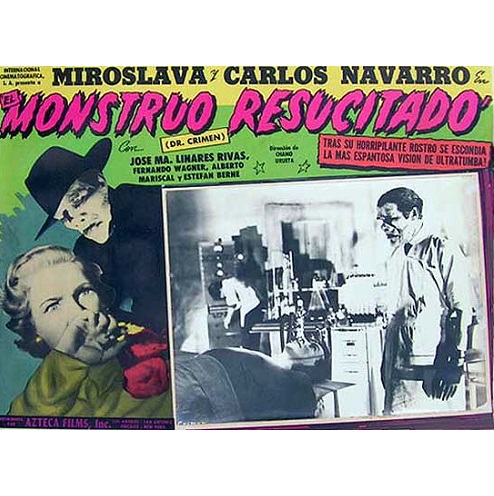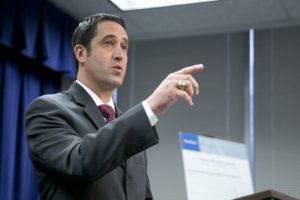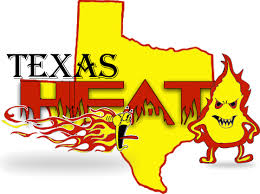You know how in the final minutes of your favorite horror movie, when our plucky heroes kill the beast with a desperate last ditch effort, and the beast goes down, to everyone’s surprise? And then the camera zooms in on the exhausted survivors leaning on one another, only to have a shadow of the beast rise up, unseen, behind them?
“No!” we shout at the screen. “Look up! It’s still alive!”
That’s the call I got last earlier this year from members of a left/right coalition which managed to help – to everyone’s surprise – kill a terrible corporate welfare program called Chapter 313 at the end of the last legislative session, in May 2021.
They are sounding the alarm over proposed rule changes by the Texas Comptroller’s office which they claim will harm transparency and allow the monster – Chapter 313 tax breaks – to rise up, back from the dead.
As of now, the program is set to expire at the end of 2022. In the light of that upcoming expiration, the Texas Comptroller’s office has proposed a change in reporting requirements for the program.
The Comptroller’s office responded to my query about the changes, asserting that rule changes are meant to respond to the sunsetting of the program, to streamline reporting, to eliminate bad tax valuation data, and that it is following an established procedure for consulting stakeholders in the program.
So what are critics worried about?
The fiendish Chapter 313 is a tad complicated, but let’s review the basics. A private company (often an energy company, but not always) wants to build a new thing in Texas. It presents a ( fake, according to a Hearst investigation and academic studies) threat that it might build the thing in some other state, so it needs tax incentives like a break on school property taxes in order to invest in Texas.
I say fake because in 85 percent of cases, the companies would have built their thing in Texas without the incentive, according to a report by UT professor Nathan Jensen, a long-time critic of the Chapter 313 program.
So it’s a pure private giveaway to incentivize a company to do the thing it would have done anyway. And you’re paying for it.
Here’s how you’re paying. A local school board approves a 10 year property tax break to build the thing in Texas. This could be worth merely hundreds of thousands of dollars in tax breaks to the company, but for big companies it can be worth tens of millions of dollars over ten years. A database currently maintained by the Comptroller lets you see how much and for how long companies get this incentive.
The Texas Comptroller’s office needs to approve new deals, but historically has given approval in 97.5 percent of cases. So that, in practice, has not been a real check and balance on Chapter 313.
Part of the evil genius of the program is that the state wholly reimburses the local school district for its 10-years of foregone tax revenue, so school districts almost never say no. And when I say “the state” provides reimbursement, I mean ultimately you, dear taxpayer, reimburse the private company for building the thing it was already going to build in the first place.
This became such a successful private corporate welfare game using public dollars that by March 2021 there were over 500 active Chapter 313 agreements, and the cost of the program reached over $10 billion in state funds.
Even with the program currently sunsetted, a gold rush of sorts is currently underway – mostly by energy companies – to apply for the sweet, sweet tax subsidies. The Comptroller’s office website shows 123 new applications submitted in 2021 alone, with more no doubt to come in the year to come.
So here’s where we are in the horror movie, in December 2021. A coalition of both left and right-oriented think tanks had worked closely with a bipartisan group of Republican and Democratic to raise awareness of the Chapter 313 problems, which helped kill it last Spring.
But Doug Greco, lead organizer for Central Texas Interfaith in Austin, said the Comptroller’s rule changes are a prelude to reviving the subsidy, by limiting the public and press’s access to data in the future. “We are under no illusions that there will be an attempt to bring Chapter 313 back in the next legislative session,” says Greco.
Among the proposed changes would be a decreased requirement to estimate the total value of projects, the number of jobs created, and the end of a centralized database of local school district tax breaks. Each of these elements made it possible in the past for legislators to study the effectiveness of the program.
Bob Fleming, a leader with The Metropolitan Organization in Houston, a coalition of churches, sees an intentional plan to revive the subsidy program by keeping the public less informed. “Make no mistake, Comptroller Hegar intends to subvert the will of the legislature,” claimed Fleming during a press conference on the issue.
The Comptroller’s stated reason – per its website – for changing disclosure requirements is to “bring the Chapter 313 reporting into the digital age by making access by the public simpler and reducing the burden on school districts and agreement holders.”
Opportunities for public comment on the Comptroller’s proposed rule changes ended December 19.
The Comptroller’s Communications Director Chris Bryan meanwhile responded that “The agency is committed to making changes in a collaborative way that provides the legislature and the public the information they need to make informed decisions regarding the manner in which tax dollars are spent.”
In the light of the current surge underway of new applications before the end of 2022 deadline, the rationale for “winding down” reporting requirements is odd. Chapter 313 subsidies continue for 10 years at a time, so reporting less information until 2032 doesn’t seem to serve the public interest.
Personally, I was stunned to see Chapter 313 go down in the last legislative session. It was the ideal example of a concentrated private financial benefit understood by insiders (tax attorneys, energy lobbyists) with a diffuse and poorly understood burden paid by the general public (that’s you and me, baby.) Sadly, treating uninformed taxpayers like mushrooms – feed them manure, keep them in the dark – usually works.
Let’s hope the Comptroller’s office pays attention to recent public comments. We need that office to shine a light on this monster in the dark, as it attempts to stand up after being left for dead.
A version of this post ran in the San Antonio Express News and Houston Chronicle
Post read (54) times.






